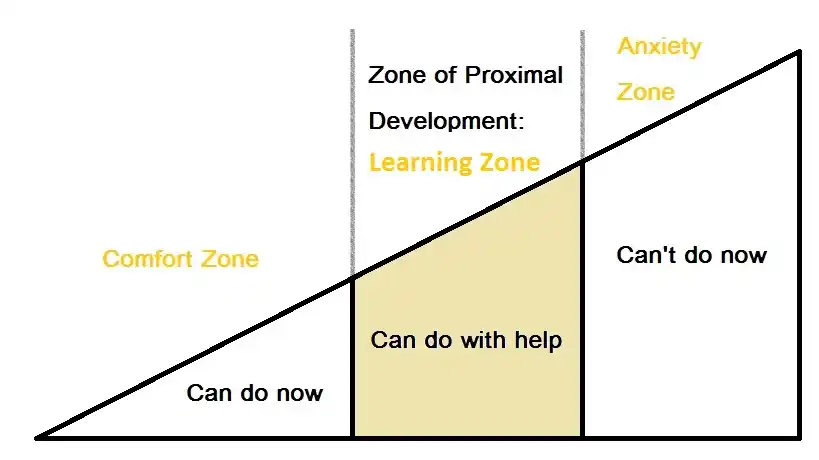Two notable developmental psychologists are Piaget and Vygotsky. Their contributions to developmental psychology are distinct. But one could argue that they are both outstanding and distinctive.
Their theory is divided into many sections.
In many sections, Vygotsky’s and Piaget’s views match up. But in many cases they are distinct.
Vygotsky and Piaget have a lot in common. But they possess unique facts. If you want to know about these theories, you’re welcome here. Read on as we reveal the sharp facts on their topic.

Piaget and Vygotsky theory in cognitive development
Role of culture in cognitive development
Piaget had a principle of universal developmental stages. This contradicts Piaget’s concept. Vygotsky does not refer to stages in the way that Piaget does.
Hence Vygotsky believed that cognitive development differs between cultures. But Piaget believed cognitive development to be universal.
Social variables influence cognitive development
For learning, Vygotsky emphasises the relevance of cultural and social environment.
However, Piaget believes that children’s cognitive development is different. It’s based on spontaneous investigations to create their knowledge. Vygotsky believed that the environment impacts how and what children think about.
Importance of language in cognitive development
According to Piaget, the evolution of language is dependent on thought. But according to Vygotsky, these are originally different systems from birth. Kids need about three years of age to produce verbal thought.
Cognitive growth, according to Vygotsky, is the outcome of linguistic internalisation.
Adults, a crucial source of cognitive growth
Adults pass on their culture’s intellectual adaptation skills to their offspring. They absorb it. On the other hand, Piaget emphasises the role of peers. Peer contact fosters the development of social perspectives.
Piaget and Vygotsky theory Discussion
Jean Piaget and Lev Vygotsky, both psychologists, had different approaches to the cognitive-developmental problem in psychology. Both Piaget and Vygotsky agreed that children actively create knowledge through learning speech. However, they disagreed on how they do it.
According to Vygotsky, most of what children learn is influenced by the society in which they live. Piaget believed in the constructivist approach to children. This simply means how the kid interacts with the environment. But Vygotsky felt that learning is taught via social and cultural means.
Piaget thought that children should be taught to comprehend schemas on their own. In contrast, Vygotsky believes that children will attain a higher cognitive level by receiving teaching from a more educated expert.
Read Also: Intracellular Fluid: Definition & Composition
Piaget also thought that children could only learn when they have achieved assimilation, accommodation, and balance. For example, when a kid meets a horse, they may integrate this knowledge. Thus, they refer to the animal as a dog. The kid will adjust to the current schema to absorb the information. This is such that certain four-legged animals are horses through the accommodation process.
On the other hand, Vygotsky thought that we could teach proper scaffolding within the zone of proximal development. Suppose pupils are unable to read at the needed level to comprehend a text, for example. In that case, the instructor may use scaffolding to gradually increase the students’ reading skills. This they do until they can read the material independently without assistance.

Piaget vs Vygotsky Differences
Therefore, we show you where Piaget and Vygotsky theories differ from each other.
Approaches to teaching
Piaget’s educational method is constructivism-based. Knowledge, according to Piaget’s thesis, is a personal construct. The use of approaches that integrate past information. Strategies induce absorption and adaptation. They are a fundamental concept of education. Supporting a child’s spontaneous investigation provides possibilities for interaction with the physical world. It can lead to discovery learning. On the other hand, Vygotsky proposes guided discovery in the classroom. In which students receive support from a more knowledgeable partner throughout the discovery process.
Teacher’s Role
Vygotsky and Piaget both see the instructor as a facilitator and guide. However, Vygotsky emphasises teacher guidance far more than Piaget. According to the Vygotskian perspective, teachers are one of the essential components for teaching. This is as they are more capable than pupils. According to Vygotsky, teachers guide students through the scaffolding process. They strive to offer guidance on how the learner reaches his objective. He continues even if he doesn’t have any help. The goal of a Vygotskian instructor is to develop self-regulatory students. According to Vygotsky’s theory, instructors must offer the necessary direction for students. Students need to bridge the gap between their present skill level and their desired skill level.
Piaget sees a teacher as an organiser who directs a stimulating plan and research. Teachers should encourage and assist children’s exploration. Teachers identify what causes disequilibrium and build curiosity in them.
Social aspects
Piaget, like Vygotsky, thinks that cognitive abilities are developed through active engagement. The significance of interaction, according to Piaget, is what leads to disequilibrium among peers. Social contacts, he believes, are a source of cognitive conflict, balance, and growth. But Vygotsky’s theory is based on social interaction and culture. Vygotsky appears to believe that social engagement is the only way to learn. According to Vygotsky, people learn from their surroundings. They learn through social contact and then build knowledge on their own.
Prior understanding
Both Vygotsky and Piaget value prior knowledge from many dimensions. Children acquire new information through accommodation and assimilation of previous knowledge, according to Piaget’s hypothesis. So, from a Piagetian perspective, previous knowledge is a crucial word in learning. Prior knowledge is equally vital to Vygotskain’s scaffolding viewpoint. Because if there is a more experienced individual there, the teacher will provide less support.
The learner’s role
Learners are engaged in learning processes. This is according to Piaget and Vygotsky. According to Piaget, a learner obtains his information by constructing his knowledge. Vygotsky believed that children learn through social interaction in a social setting. But Piaget believed that learning happens individually. According to Vygotsky, the student requires a teacher. They also need skilled classmates during the learning process. The other’s guidance is not as prominent in Piaget’s theory as it is in Vygotsky’s.

Piaget’s Theory
According to Piaget, there are four universal and sequential phases of cognitive development from newborn to young adult. These are sensorimotor, preoperational, concrete operations, and formal operations. The sensorimotor stage occurs when a kid is under two. During this period, the kid discovers their environment. He does it through movement and the senses. Object permanence develops. It comes in the final stages of the sensorimotor stage. It means the knowledge that an object persists even if it’s not inside the field of view.
The kid also learns that their actions can trigger other activities. As kicking a mobile can make it move. This is an example of conduct that is oriented toward a particular purpose. Children in the sensorimotor stage can undo actions but not thoughts.
Between the ages of two and seven, a kid is in the preoperational period. According to Piaget, the kid has not yet learned to do mental processes. In the preoperational period, a child’s capacity is low. They can’t think through actions. This stage of development is characterised by egocentrism. This is known as the assumption that others share their viewpoints. Children at this stage engage in collective monologues. Here each kid speaks. But they do not interact with the other children due to egocentrism.
Three main principles of Piaget’s theory:
- Children are active learners who create information from their surroundings.
- They learn by assimilation and accommodation. But sophisticated cognitive growth happens through equilibration.
- Children’s engagement with their physical and social settings is crucial for cognitive development.

Vygotsky’s Theory
Over the last several decades, Lev Vygotsky’s (1934) work has served as the foundation for many studies. This also helped in cognitive development. Notably, this has come to be known as sociocultural theory. According to Vygotsky’s sociocultural theory, human development is viewed as a socially mediated process. Here children learn cultural values, beliefs, and problem-solving techniques. They learn it through collaborative conversations. They need to talk to more informed members of society. Culture-specific tools, private speech, and the Zone of Proximal Development are all in Vygotsky’s theory.
Vygotsky’s ideas emphasise the importance of social contact. This is the formation of cognition. He strongly felt that community plays an integral part in the process of “creating meaning.”
Vygotsky claimed that learning is essential. And it is also a universal component of the process of developing culture. This is in contrast to Piaget’s belief that children must precede learning. To put it another way, social learning tends to occur before the change. Development cannot be explained. Individual growth is impossible to comprehend. We need to guess the social and cultural context. Personal mental processes have their origins in social circles.
Three main principles of Vygotsky’s theory:
- The first few years of life are essential for development. This is when cognition and language become increasingly autonomous. The complicated mental processes begin. They form fundamental social activities.
- With the assistance of a more sophisticated individual activity that is demanding. The children may do more difficult activities that encourage cognitive development growth.
- Play is essential. It helps youngsters to extend their cognitive abilities.
Conclusion
Finally, both psychologists have made important contributions to the subject. Through ways, Piaget believed that children move through a universal stage of cognitive development. The ways are maturation, discovery techniques, and some social transmissions of assimilation and adaptation. But Vygotsky’s theory stressed the relevance of culture. He also uses language in one’s cognitive development.




